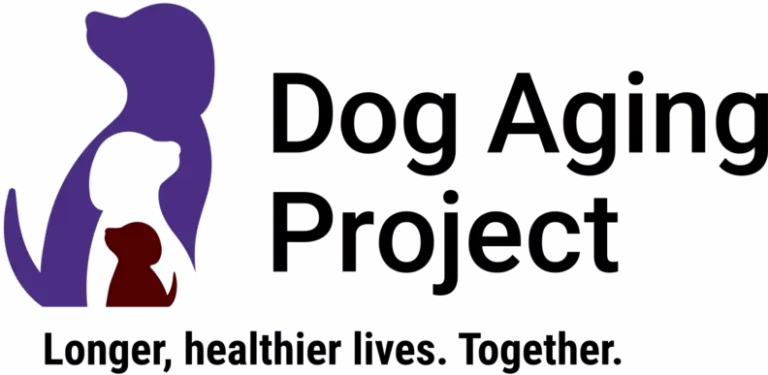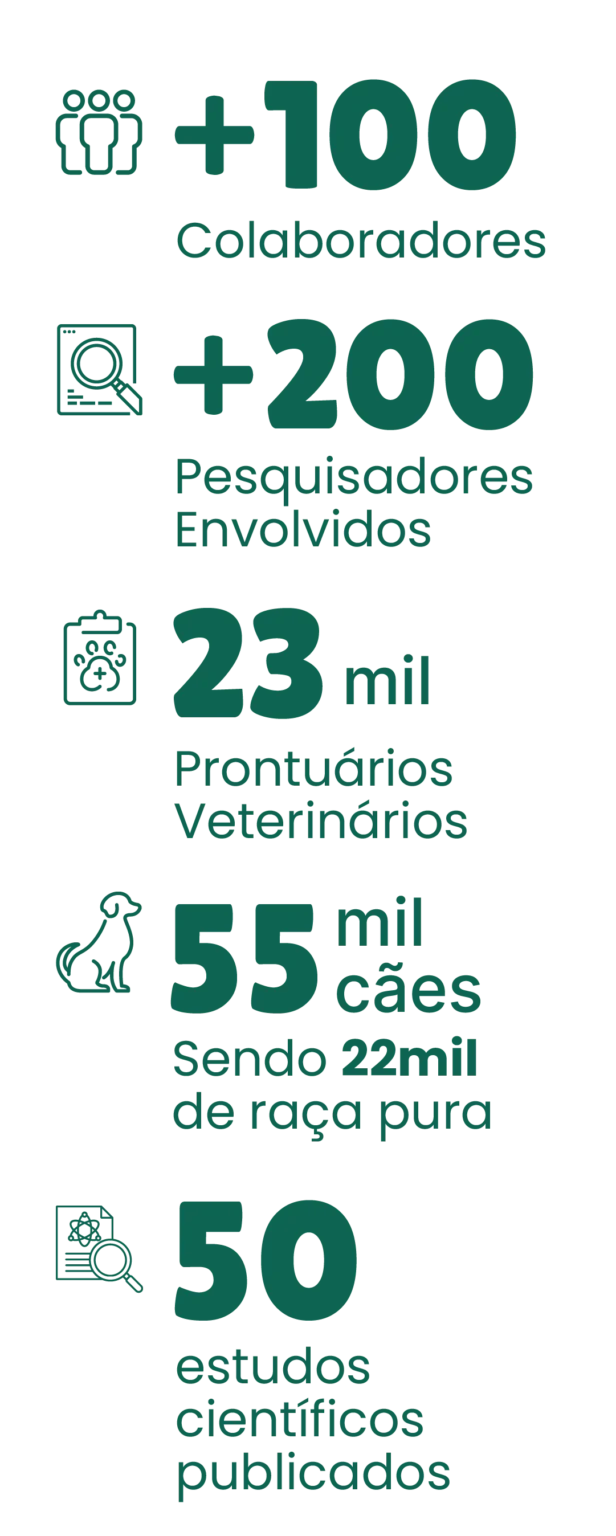
Você sabia que é possível prolongar a vida dos cães em até 25%?
O programa da PetMoreTime combina tecnologia, monitoramento contínuo e conhecimento científico para ampliar o tempo de vida saudável do seu melhor amigo.

Hoje, a ciência da longevidade já permite intervir nos principais efeitos do envelhecimento, como perda de energia, mobilidade, cognição, saúde cardíaca e bucal.
Mais do que adicionar tempo à vida, queremos adicionar vida ao tempo, ajudando seu cão a vivenciar a velhice de forma saudável, ativa e feliz ao seu lado.

Durante 14 meses, seu cão será acompanhado por especialistas, com o uso de um geroprotetores inovadores, exames detalhados e monitoramento contínuo.

Cientista-chefe da PetMoreTime e cofundador do Dog Aging Project, o maior estudo de envelhecimento canino do mundo.



O Dog Aging Project (DAP) é um estudo de longevidade em cães que vem sendo realizado há mais de 10 anos, que já envolve mais de 50 mil cães de companhia participantes.
Apoiado pelo National Institute on Aging, nos EUA, o projeto investiga o processo de envelhecimento em cães (lifespan), buscando entender fatores genéticos e ambientais que o influenciam, além de testar intervenções geroprotetoras, que possam melhorar a longevidade e a qualidade de vida destes animais (healthspan).
O DAP é uma das principais fontes que sustentam o conhecimento em longevidade canina dentro da PetMoreTime.

Por meio do PAMEC, a PetMoreTime atua para modular o envelhecimento dos cães de 11 Polícias Militares no Brasil e incentivar a ciência.
Publicado em 01 de janeiro de 2025

Publicado em 30 de setembro de 2025

Publicado em 30 de setembro de 2025

Publicado em 01 de dezembro de 2025

Publicado em 06 de outubro de 2024
A PetMoreTime® é uma empresa brasileira de biotecnologia, focada em desenvolver terapias seguras e eficazes para prolongar a vida dos cães de forma saudável, por meio de protocolos personalizados que combinam fármacos pró-longevidade canina (geroprotetores), nutracêuticos, monitoramento com alta tecnologia e acompanhamento veterinário especializado.
Também desenvolvemos propriedade intelectual relacionada a intervenções para minimizar o impacto do envelhecimento.
O programa de longevidade da PetMoreTime inclui:
Podem participar cães de meia-idade e idosos (os limites de idade dependem da raça ou porte do animal). É necessário, como pré-requisito, passar por um bate-papo gratuito com a equipe veterinária da PetMoreTime. Você pode inscrever o seu cão no link a seguir: https://my.petmoretime.com.br/
O Programa de Longevidade de 14 meses custa R$ 14.280 e pode ser parcelado em até 12x sem juros no cartão. Neste custo, contemplamos um alto valor agregado, contendo muita tecnologia, além de todas as medicações com os geroprotetores e nutracêuticos em fórmulas personalizadas, as baterias de exames completas, a coleira inteligente com monitoramento 24 horas, bem como o acompanhamento veterinário especializado.
Sim. Nosso co-fundador e cientista chefe, Dr. Matt Kaeberlein, também é co-fundador do Dog Aging Project, o maior programa científico de longevidade canina do mundo.
Portanto, nosso primeiro protocolo disponibilizado no Brasil se baseia em mais de uma década de aprendizado do projeto.
Da mesma forma, estamos desenvolvendo uma pesquisa inédita no Brasil, para desacelerar o processo do envelhecimento canino e, dessa forma, descobrir novas terapias para retardar o declínio físico e cognitivo em cães (PAMEC).
Você pode conferir uma lista de estudos científicos em nossa página de Literatura Científica.
O Dog Aging Project é o maior programa de pesquisa em longevidade canina do mundo, com 50 mil cães participantes e mais de uma década de estudos científicos. Co-fundado pelo nosso Cientista-Chefe e PhD Dr. Matt Kaeberlein, o projeto já publicou mais de 50 artigos científicos e possui um banco de dados com mais de 23 mil prontuários veterinários. Participam do projeto mais de 40 instituições renomadas, incluindo Harvard Medical School e Princeton University.
A coleira inteligente é utilizada para monitorar a saúde e o comportamento do cão em tempo real.
Ela ajuda a coletar dados importantes, como frequência de pulso, frequência respiratória, temperatura, mudanças de postura, atividade física, padrões de sono e outros sinais vitais, essenciais para o acompanhamento personalizado do protocolo de longevidade.
O envio dos fármacos e nutracêuticos é realizado mensalmente durante os doze meses de tratamento. As doses e os produtos utilizados são revisados a cada mês para se adaptar ao pet e ao momento de vida em que ele se encontra.
Isso acontece porque, assim como nenhum latido é igual ao outro, cada cão tem necessidades únicas que podem mudar ao longo do tempo.
O protocolo é ajustado conforme a avaliação veterinária e os dados coletados pela coleira inteligente, garantindo que o tratamento seja sempre o mais adequado para o bem-estar do animal.
O programa PetLife tem duração total de 14 meses. No primeiro mês fará o agendamento de consultas e exames, após isso, terá doze meses de tratamento, e no último mês ocorrerá a revisão do tratamento com análise de próximos passos. Isso forma um ciclo completo de tratamento, focado em melhorar a saúde e qualidade de vida do cão, retardando os sinais de envelhecimento.
A seção “Ciência” do site da PetMoreTime® fornece detalhes sobre os fundamentos científicos dos protocolos desenvolvidos.
O acompanhamento veterinário é preciso para a personalização do protocolo. Apenas um profissional habilitado poderá fazer uma avaliação profunda das condições de saúde do cão para a prescrição do que é ideal para o seu momento de vida e necessidades. Além disso, este acompanhamento garante que o protocolo seja frequentemente adaptado acompanhando a evolução do cão. Assim, garantimos o bom uso do protocolo e a oferta do que de fato é necessário para que o cão tenha maior qualidade de vida, afinal, cada organismo é único.
A principal diferença entre fármacos e nutracêuticos na veterinária está na regulamentação e na finalidade de uso:
Descubra se o seu cão pode participar do Programa de Longevidade Canina.
O que nos move? Saúde e Segurança Sempre em Primeiro Lugar
Prioridade total para o bem-estar e segurança do seu cão, com base em ciência responsável.
Inovação com propósito
Ciência e tecnologia avançadas unidas para prolongar a vida e a saúde do seu melhor amigo.
Cuidado personalizado
Programas feitos para atender às necessidades exclusivas do seu melhor amigo.